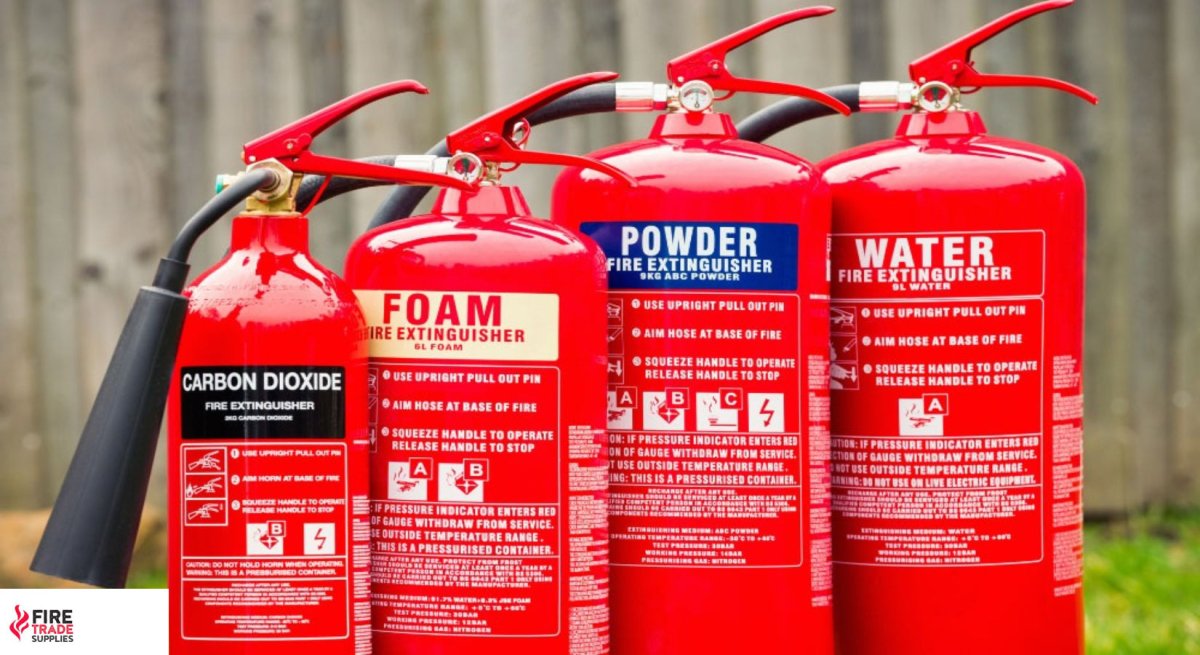Fire Extinguisher Types: A comprehensive guide of the different types and classes of fire extinguishers
Understanding the differing classes and types of fire extinguishers is not only a theoretical concern for end users around the world, but a critical practical knowledge that could be lifesaving during emergency situations.
The primary goal is to match the fire extinguisher type with the nature of fire one may potentially encounter. This is crucial for you to understand as it could be the difference between extinguishing the fire safely and not.
Fire Trade Supplies, who are a well-established fire alarm distribution company, offers a comprehensive array of fire products tailored to meet diverse requirements.
This guide is aimed at elucidating the various types of fire extinguishers and their designated fire classes to better equip you in making an informed choice.
Types of Fire Extinguishers
Every type of fire extinguisher is engineered to combat specific classes of fire. Below are the six main types:
- Water: Ideal for Class A fires involving solid combustibles like wood, paper, and textiles.
- AFFF Foam (Aqueous Film-Forming Foam): Effective against Class A and B fires, the ones involving flammable liquids such as petrol, diesel, and paraffin.
- Carbon Dioxide (CO2): Best suited for electrical fires and some Class B fires.
- ABC Powder (Dry Powder): A versatile option against Class A, B, and C fires, those ignited by flammable gases like methane, propane, and hydrogen.
- De-ionised Water Mist: A multi-functional extinguisher proficient in tackling various fire classes.
- Wet Chemical: Specifically designed to combat Class F fires involving combustible cooking media like burning oil and fat.

Fire Classes
Fire classes are categorised based on the type of fuel igniting the fire:
- Class A: Solid combustibles (wood, paper, textiles)
- Class B: Flammable liquids (petrol, diesel, paraffin)
- Class C: Flammable gases (methane, propane, hydrogen)
- Class D: Flammable metals (magnesium, aluminum, lithium)
- Electrical Fires: Suitable for electrical equipment
- Class F: Cooking oil fires (deep fat fryers, chip pans)

Fire Extinguisher Colour Codes
All fire extinguishers have a red body, with agent-specific colour code bands covering 5-10% of the surface to quickly identify the contents of the extinguisher.
A well-informed choice in fire safety measures significantly elevates the level of protection provided.
Service-Free Fire Extinguishers (P50)
Among the various offerings, the Service-Free Fire Extinguishers (P50) are notable due to their longer lifespan compared to traditional extinguishers. They also contribute to lowering maintenance costs significantly.
Further Guidance
For more precise recommendations and further assistance in selecting the right fire extinguisher, consider exploring our collections or delve deeper into the nuances of fire safety on our blog. Our recent posts on electric smoke detectors and Gent Fire Activate systems provide additional insights into modern fire detection and safety solutions.
In summary, a proper understanding of fire extinguisher types and classes is instrumental in enhancing fire safety measures, whether it's for residential, commercial, or industrial premises. At Fire Trade Supplies, we are committed to providing products and information that foster a safer environment for all.

